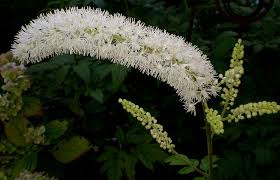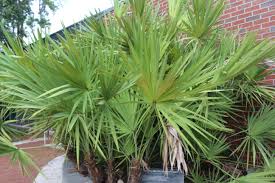Healing Herbs of Native America.
Native people used following herbal medicines to cure Constipation and it was practiced nearly 500 different tribes. It is one of the very earliest holistic lifestyle and health practices. It is inconceivable to consider indigenous American medicine without involving the spirit, mind, and body.They were, in general, healthier than the early European settlers because they lived from nature’s abundance and learned how to use herbs and plants not only for nourishment but also their medicine. Natural remedies helped for common complaints such as fever, respiratory problems such as bronchitis, colds, aches, and pains and wound treatment to mention just a few. They used herbs that were antiseptic and had the wisdom to isolate their sick for treatment to special huts, practices that were unheard of by the early western civilization. It is beyond the scope of this article to go into much detail about the fascinating holistic wisdom of Native American medicine.
Here is an introduction to 8 of the most important herbs:
 |
| American Ginseng |
Ginseng of any genus should not be used with anti-depressants nor taken by those with high or very low pressure. It may cause insomnia if taken too late in the evening.
2. Arnica – This plant was used by Native Americans to ease muscle ache and joint pain. Arnica contains a natural pain reliever (caffeoylquinic acid).
 |
| Arnica Flowers |
 |
| Black Cohosh |
3. Black cohosh (Actaea racemosa) – This plant is native to eastern North America. It has grown in woodland habitats and is often found in small woodland openings. A phytohormone that mimics estrogen, it also balances female hormones. Studies have shown that PMS symptoms such as menstrual cramps and irritability are reduced greatly. In menopausal women, night sweats and hot flashes often disappear or are much reduced. Research suggests that it can be an effective replacement for HRT without the dangerous side effects. Where HRT using synthetic hormones can increase the risk of various cancers, Black Cohosh may cut the risk up to 60% of developing breast cancer. However, those with existing hormone-sensitive conditions such as breast, ovarian or uterine cancer or uterine fibroids should avoid its use.
It should also not be used by pregnant women as it has been used to induce labor or those with aspirin allergy as it contains a small amount of salicin, from which salicylic acid was isolated to make the first aspirin in the mid-1800'. In 1899, it was further developed by the German company Bayer which resulted in the first aspirin. It is now produced synthetically.
4. Sagebrush (Artemisia tridentata) – This is perhaps one of the most important plants to the Native Americans. It was used to purify the air at tribal and personal spiritual ceremonies and around the sick and ill. Research shows that indeed, sagebrush contains potent antiseptic and anti-inflammatory properties.
 |
| Sagebrush |
Sagebrush was also drunk as a medicine to stop internal bleeding from trauma injuries (battle or hunting wounds) or in childbirth. It was also brewed to wash infected wounds and as a topical wound dressing. If taken internally, sagebrush is toxic to the liver and digestive system with resulting symptoms dissipating within 24 to 48 hours.
Sagebrush grows wild in western America and is not related to the sage most people are familiar with in the kitchen which is Salvia officinalis – an important plant with its own medicinal value as well.
5. Saw Palmetto (Serenoa repens) – A low growing dwarf palm tree, its use can be traced back centuries where it was thought to be first used by the Natives who settled in Florida and picked the berries for use as a staple food and medicine.
 |
| Saw Palmetto |
You may also interested in reading Proven Health Benefits of Turmeric
6. Stinging nettle (Urtica dioica) – One of my personal favorites, stinging nettle has many uses, not the least being an excellent source of minerals and most especially calcium in a balanced and bioavailable form.
 |
| Stinging nettle |
Use a few handfuls of dried herb to a large preserving jar and add about a generous liter (quart) of boiling water. Pre-warm the jar first and it will not shatter. Let it sit covered overnight, strain and drink during the day or the next (refrigerate). Chilled with lemon or mint or thinned with water, it is delicious and refreshing.
Recent research has demonstrated that because it seems to impede the immune response to produce histamines, it is more than 50% effective in helping with nasal allergies when compared to prescription and non-prescription drugs. It noticeably reduces the allergy symptoms and causes of sneezing, reduces swollen nasal passages and congestion. A positive side effect is that it is an anti-inflammatory and natural analgesic (pain reliever).
7. White Willow (Salix alba) – Native Americans made tea from this herb and drank it to ease aches and pains. The bark of White willow plant contains salicin, which is equivalent to the chemical in aspirin that is responsible for the relief of pain. Due to the difference in the amount of Salicin present in both sources is absorbed by the body: aspirin works faster, while white willow relieves pain longer. The additional benefit of white willow is that it doesn’t irritate the stomach. Either you can drink this as a tea or take it in capsule form.
 |
| White Willow |
The original ‘aspirin’, Native Americans drank a tea made from the bark of the white willow to help ease aches, pains and to lower minor fevers. It produces perspiration and thus cools the body naturally. The bark contains salicin (see my comment above regarding Black Cohosh). Synthetic aspirin may work faster, is, however damaging to the stomach and is a known blood thinner. White willow works a little slower but relieves pain longer without irritating the stomach. One of the reasons for this is the lower concentration of salicin, salicylic acid and the synergistic and buffering effect of the other constituents such as tannin, rutin, calcium, iron, and other minerals. It does not affect the blood platelets and so will not increase bleeding. Besides headaches and lowering minor fevers and because it is anti-inflammatory, it is helpful for joint pain, arthritis, rheumatism, osteoarthritis, neuralgia, and gout.
 |
| Yarrow flowers |
8. Yarrow (Achillea millefolium) – Native medicine considered yarrow a very valuable ‘strong medicine’ herb, so much so that the Navaho people called it ‘life medicine’. Scientific research supports its use topically as a strong astringent and antiseptic. Containing natural coagulants, it quickly helps stop bleeding from wounds and kill bacteria. The Cherokee washed with a strong concoction of it to help battle wounds heal quickly. Internally it is used as a stimulant and tonic, a vasodilator, carminative, digestive, diaphoretic, vulnerary and emmenagogue. It is also used for the treatment of skin rashes and eczema, it can be purchased as an ointment or cream.
If you like the article please like and comment. Also, share it with the person who needs this information.













0 comments:
Post a Comment